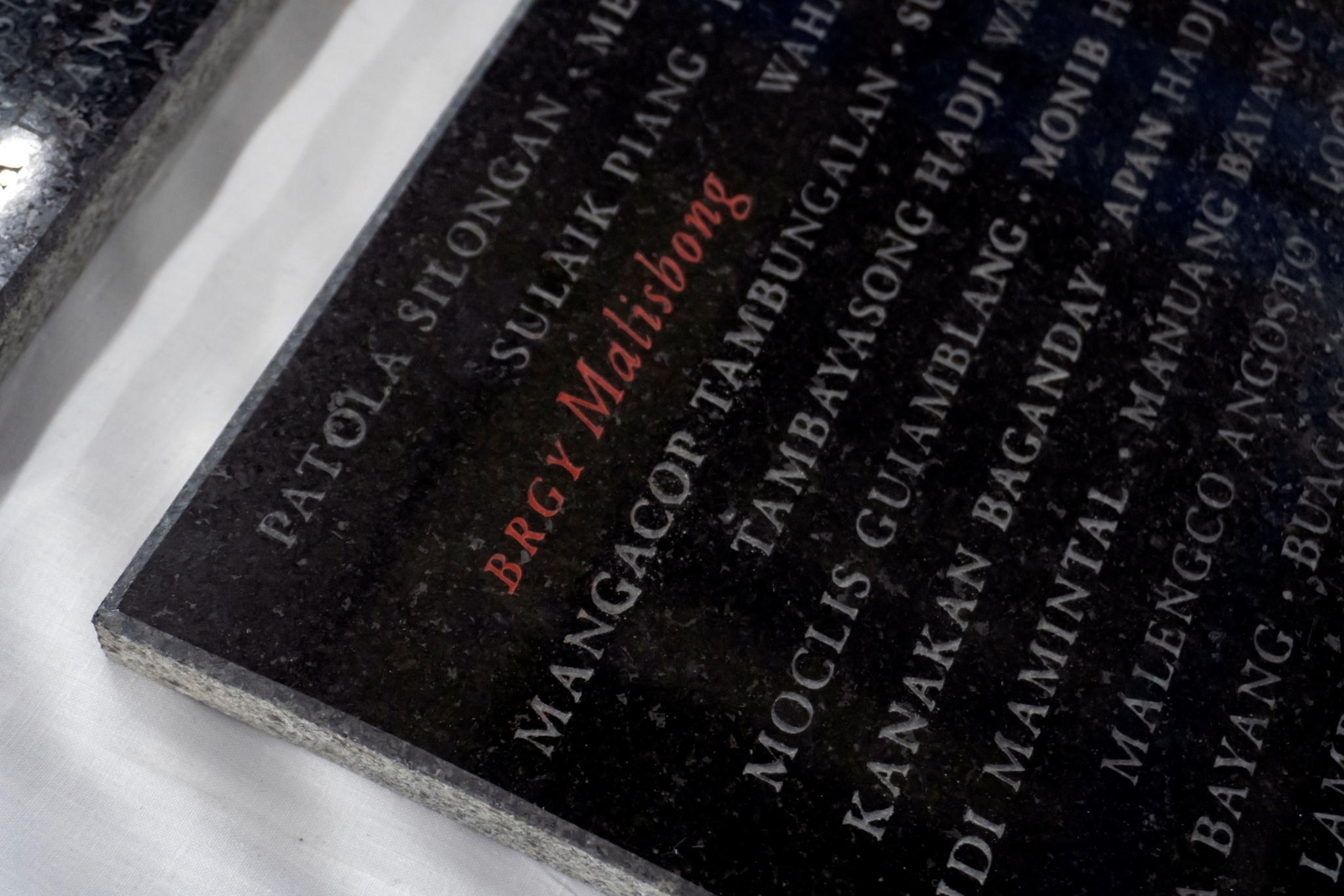Exhibitions

Exhibition
Weaving Women's Words on Wounds of War
Monday, 22 Aug 2022 to Saturday, 01 Oct 2022
3/F | Fredesvinda Almeda Consunji Gallery, Ambeth R Ocampo Gallery, Elizabeth Gokongwei Gallery, and Alicia P Lorenzo Gallery
See the virtual tour here.
Visit the Ateneo Art Gallery!
Open Monday-Saturday, 9:00 AM-5:00 PM
Closed on Sunday and holidays.
For inquiries, email aag@ateneo.edu.
"Weaving Women’s Words on Wounds of War" is co-presented at and by the Ateneo Art Gallery with this university's Political Science Department of the School of Social Sciences, the Asia-Pacific Centre for the Responsibility to Protect, and the Spanish Agency for International Development Cooperation (AECID). The contemporary art exhibition consists of works atypically co-created and co-authored by members of a Manila-based exhibition team and of 6 communities of women who experienced different forms of human rights abuse during the period in which Martial Law was imposed on the Philippines by President Ferdinand Marcos during the early 1970s.
 Palimbang's thousand-fold grief: Endurance | An artwork to the memory of the 1974 Palimbang massacre. The 32 blocks are a design and fabrication of the greater part of a recommended physical memorial that may be permanently installed in Palimbang in due course.
Palimbang's thousand-fold grief: Endurance | An artwork to the memory of the 1974 Palimbang massacre. The 32 blocks are a design and fabrication of the greater part of a recommended physical memorial that may be permanently installed in Palimbang in due course.
Avoiding representation in any Realist genre, the artworks in WWWWW are installations developed with the women concerned and research partners from the sites, who undertook extended interviews and translation over months. The artwork development involved careful navigation of ethical issues, notably, the interrogation of art's relation to violence.
Half a century since the events that indelibly marked their lives, the project's women respondents continue to live in Palimbang in Sultan Kudarat; Tabuk and Buscalan in Kalinga; Lake Sebu and Tboli in South Cotabato; Manili in Carmen, Cotabato; Jolo in Sulu; and in the vast home waters of the Sama peoples in Sulu and Tawi-Tawi.
Some of the experiences were unspeakable atrocities, such as the murder of more than a thousand Muslims in Palimbang; some are subtle manipulations, such as the entry of the Tboli women of Lake Sebu into the cash economy, virulent patriarchy, and crash modernization.
 Invisibilities in the Sama islands and seas: Grace | Mold of a Sama mat on a bed of cornstarch. The participating Sama women seek justice, one that acknowledges Sama and Tausug ritual life and guarantees its continued growth. The ephemerality captures their grace: revealed in its place, they hope, an integrated Samalan and Tausug cultures of the past.
Invisibilities in the Sama islands and seas: Grace | Mold of a Sama mat on a bed of cornstarch. The participating Sama women seek justice, one that acknowledges Sama and Tausug ritual life and guarantees its continued growth. The ephemerality captures their grace: revealed in its place, they hope, an integrated Samalan and Tausug cultures of the past.
The artworks were created to be evocative of experiences of impunity in small Muslim and katutubò communities. Martial Law facilitated State action to usurp the Philippines’ interior areas as available—with no constraints—to natural resource exploitation. The large-scale projects were articulated as grand national development strategies, which did not recognize the prior stake of small communities living in the areas to be denuded, or flooded, or dug up, or flattened—literally or culturally.
Such exploitation and abuse generated resistance from the communities that the President assumed would stand aside, to allow progress for the country’s dominant groups. The women who helped make this exhibition were among those who did not stand aside—who decided for direct participation in armed resistance to state policy that they viewed as inimical to their wellbeing, or who suffered extraordinary human rights violations, or both.
Curated by Marian Pastor Roces, who is assisted by artwork development lead Karl Castro, the exhibit is part of a larger project titled "Surfacing Narratives Towards Transitional Justice in the North and South: Weaving Women’s Voices – A Memory Project" led by Dr. Ma. Lourdes Veneracion-Rallonza, feminist and political scientist; and human rights advocate Robert Francis Garcia. Apart from this exhibition, the project also includes field research in all six areas, publication of a book, policy recommendations, and a capacity-building program on transitional justice with focus on women. Dr. Meynardo Mendoza, historian, leads the research, and anthropologist Maricel P. Hilario-Patiño is project officer.
Paul Dawnson Formaran is the exhibition team's lead, with Maria Fe Quiroga serving as both curatorial assistant and graphic designer. The team has been assisted by contemporary artist-curators Katya Guerrero and Sara Rivera.
The exhibition will run from August 22 to October 1, 2022.
Weaving Women’s Words on Wounds of War: An exhibition of artworks collectively made with communities of women who endured the punishing impact of impunity during the Martial Law regime.
August 22 to October 1, 2022
Ateneo Art Gallery
Open from Mon-Sat, 9am to 5pm
Marian Pastor Roces, curator; Karl Castro, lead artwork developer
Exhibition team: Maria Fe P. Quiroga, Paul Formaran, Maricel P. Hilario-Patiño, Katya Guerrero, Sara Rivera, Miguel Lorenzo Uy, D Cortezano

